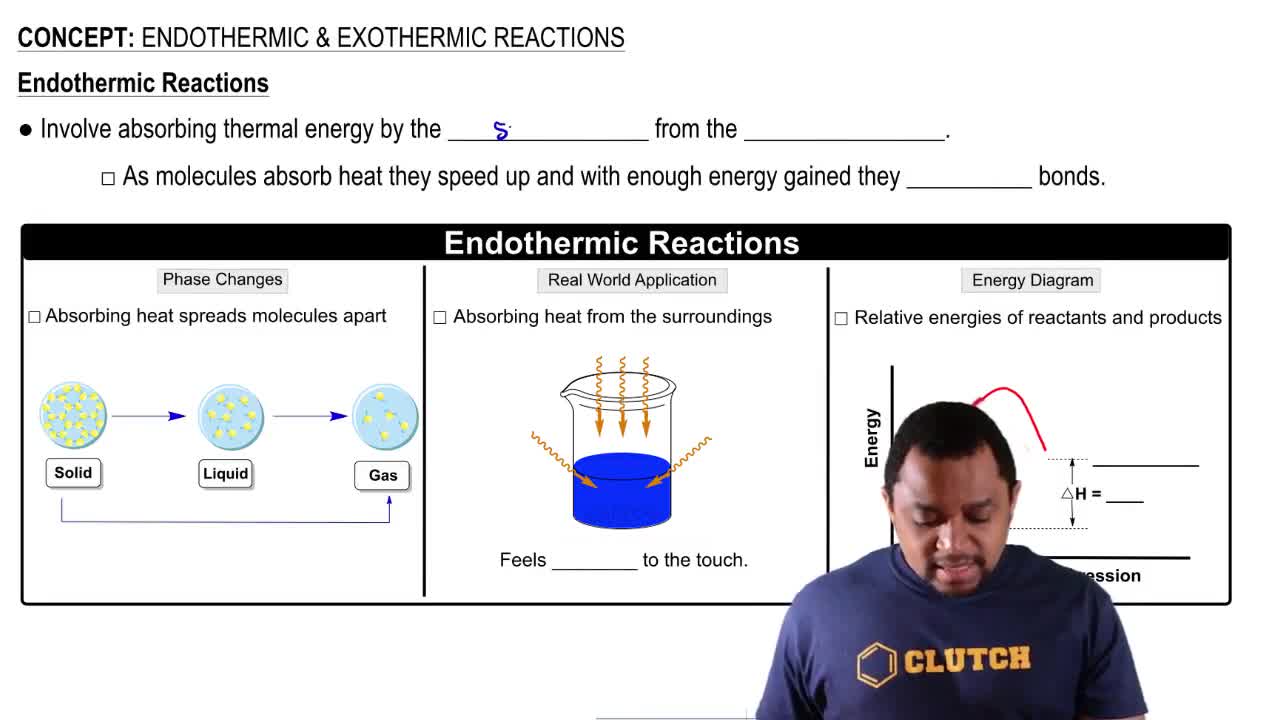Here are the essential concepts you must grasp in order to answer the question correctly.
Equilibrium Constant (Kp)
The equilibrium constant, Kp, is a measure of the ratio of the partial pressures of the products to the reactants at equilibrium for a gaseous reaction. It is calculated using the formula Kp = (P_NH3^2 * P_CO2) / (P_(NH4)2NH2CO2), where P represents the partial pressures of the gases involved. For endothermic reactions, an increase in temperature typically shifts the equilibrium to favor the formation of products, thus affecting Kp.
Recommended video:
Equilibrium Constant Expressions
Le Chatelier's Principle
Le Chatelier's Principle states that if a dynamic equilibrium is disturbed by changing the conditions, the system will adjust to counteract the change and restore a new equilibrium. This principle helps predict how changes in concentration, pressure, or temperature will affect the position of equilibrium in a reaction, such as the addition or removal of reactants or products in the given decomposition reaction.
Recommended video:
Endothermic Reactions
Endothermic reactions absorb heat from their surroundings, resulting in a decrease in temperature of the environment. In the context of the given reaction, the decomposition of ammonium carbamate requires heat input, which means that increasing the temperature will favor the production of gaseous products (NH3 and CO2). Understanding the nature of endothermic reactions is crucial for predicting the effects of temperature changes on equilibrium.
Recommended video:
Endothermic & Exothermic Reactions




